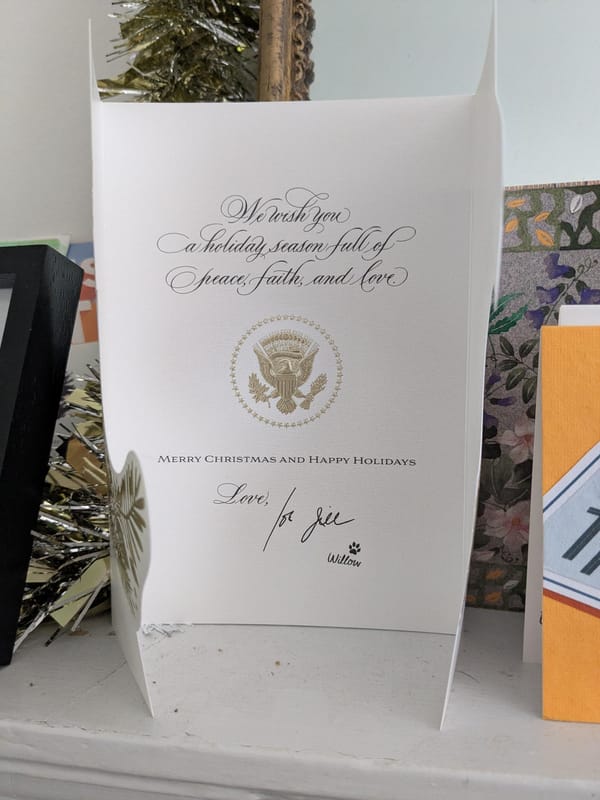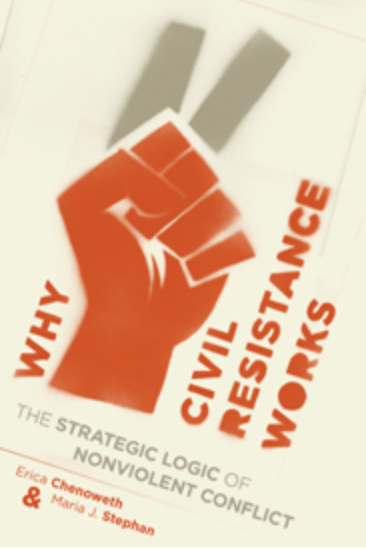The Plan #4: Technology, Innovation, and Progress
[Author's Note: not even three years after this piece is set, TIP, the NSF, and the United States with it, are being rocked by an administration that does not care what is true – and thus, an administration that sees science as the enemy. People have already been fired from, and hired back to, NSF, and nobody knows what will happen next. But rather than update the text to address this directly – since we'll be getting to that eventually anyway – I chose to leave it in its older, happier form. Not just a reminder of what was, but what can still be, if we fight for it.]
[Author's Other Note: I was technically a contractor at NSF, though this did not make my work any different, and am no longer professionally affiliated with them in any way. These views are certainly my own – and they may be NSF's too at this point, but you'll just have to ask them yourself to be sure.]
As I sat in the long conference room, with a full wall of glass behind me looking out over Alexandria, intentionally avoiding the director’s eyes and trying unsuccessfully to access the WiFi, it was currently June, 2022. Three months earlier, at the South by Southwest conference, NSF had announced its largest change in 36 years: the establishment of the Eighth Directorate. Next to the programs you would expect at a science foundation, such as in Physics and Chemistry and Biology, there now stood the directorate for Technology, Innovation, and Partnerships, or “TIP.” New directorates were not unheard of, and like the additions of Engineering in 1981 and Computer and Information Sciences in 1986, this meant new programs, and new people, and new research. But there was something different this time. TIP signaled a fundamental shift in the kind of problem that NSF worked on.
The launch of TIP was a fundamental break with this seventy-two-year-old model of funding basic research, and in a number of ways. TIP wasn’t announced at the World Chemistry Congress, or the International Conference on Particle Physics and Cosmology, or in some beige and windowless hotel conference venue. It was announced at SXSW, the festival for technology, yes, but also film, music, and the arts. South by Southwest is cool. NSF is many things, and many of those things are exceptional, including its quiet but monumental influence across the twentieth century. But notwithstanding its many enthusiastic fans in academia, “cool” is something that it is mostly, not.
Again — until, maybe, three months ago.
It might not seem like a transformative change, but in an important way, the simple choice of venue represented the greater concern with more worldly, applied problems. It showed scientists spending time in a place that wasn’t a particle accelerator, or the North Pole. Whether or not NSF was going to start funding music festivals, SXSW was the symbolically perfect place to announce that after seventy two years, after a lifetime of deep, slow questions and revolutionary answers, the august National Science Foundation was making a permanent commitment to start engaging in a totally different kind of research: the kind that answers focussed, urgent, immediate questions. Once again, this wasn’t happening in the world fast enough on its own, so NSF chose to grab the baton itself. This is what TIP will do. They will do it hoping that their impact, on science, on the nation, and on the world, will be just as transformative — but in a very different way.
There are many things that are different about supporting this kind of research, and many new problems to solve when trying to do it right. There was one in particular though that had been bothering many of the people at the top of the foundation. This was the problem of simply measuring success.
As the availability of data explodes, the world is facing a renaissance of understanding — but renaissances are not always comforting. Data on policies and programs from every corner of the world is showing us that the things we thought were helpful are often ineffective, or worse. This crisis has led to a surge of work in evaluation across the world, figuring out the extremely slippery problems of how to measure and verify that the outcomes we want are the outcomes we’re getting. While agencies across the US government are grappling with this problem, to a department full of scientists, this question borders on the sacred. Are our theories correct? Do our methods work? We have to know!
For the old way of doing things, there was the old answer. With basic research, if you want to measure success, you count the number of research papers published. Maybe you count the number of people who reference that paper in their own papers. And you’re done. Everybody agrees there are problems with doing it this way, but everybody does it anyway, and tries to deal with the problems later if they deal with them at all. This is how we agree to measure research success.
However, what happens when basic research is no longer the goal? Suddenly, there is no widespread consensus. It’s easy to write about “grand challenges of national importance” on a website, but what does a “grand challenge” even mean? How do we recognize one, how do we know we’ve solved it? Are we really making the world better? And who is going to tell us?
And my best guess is that the Director is probably wiggling his eyebrows at me, because that is my job.
Subscribe to make sure you don't miss the next part!
And donate, to make sure I can stay alive to post it!



